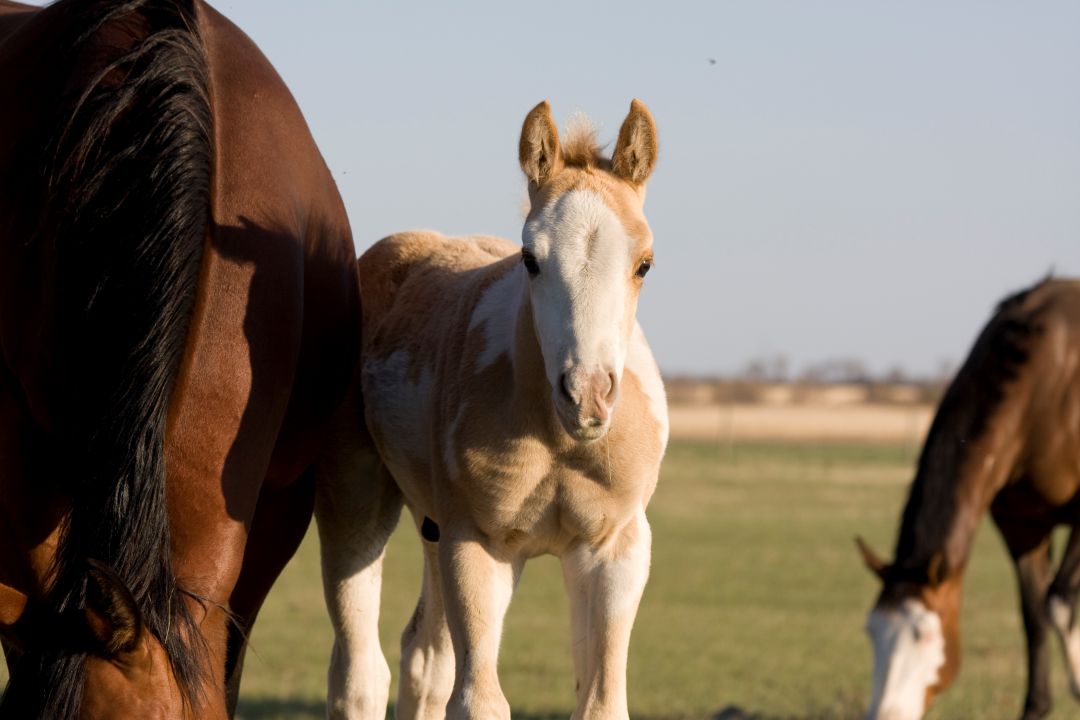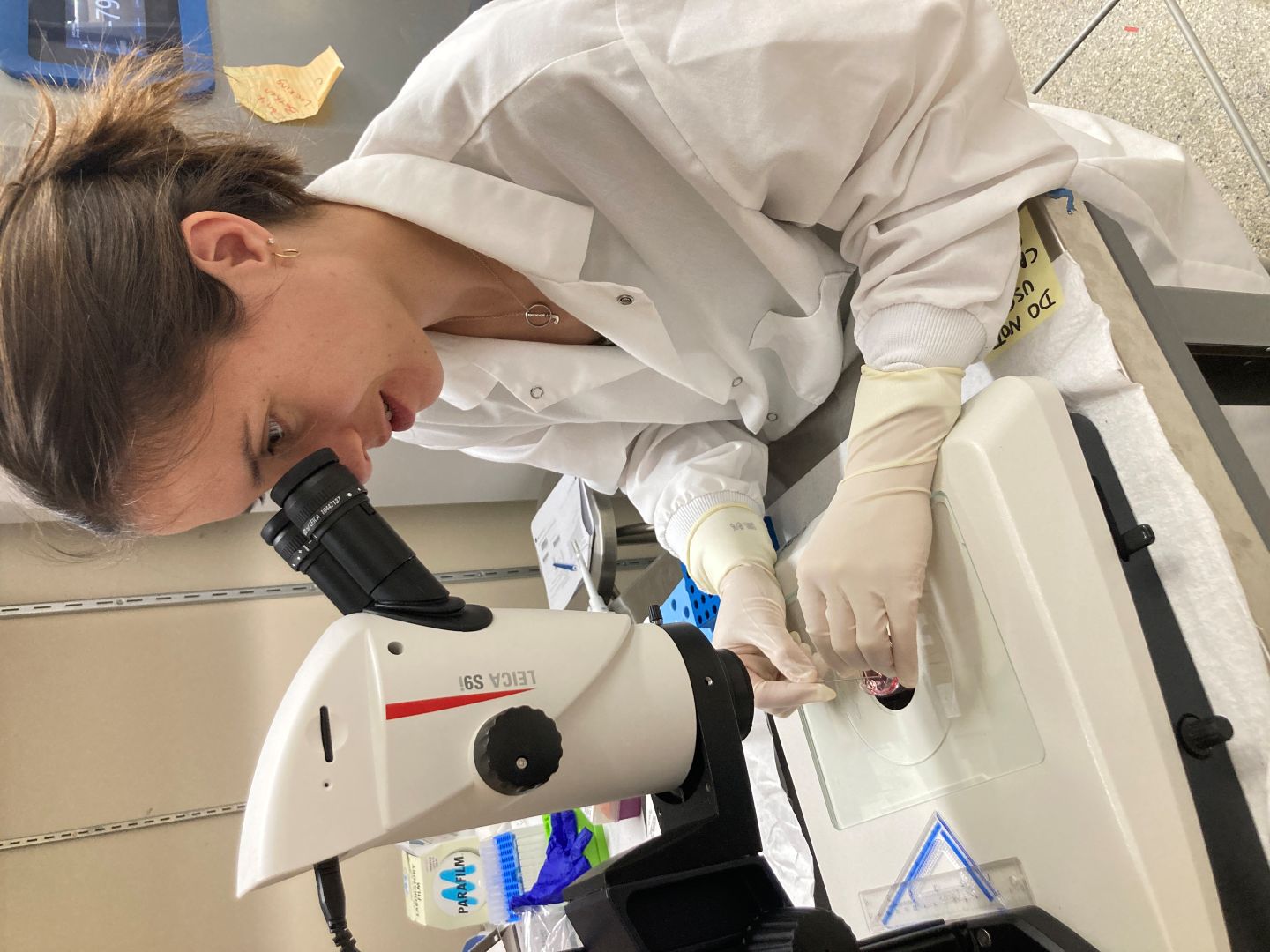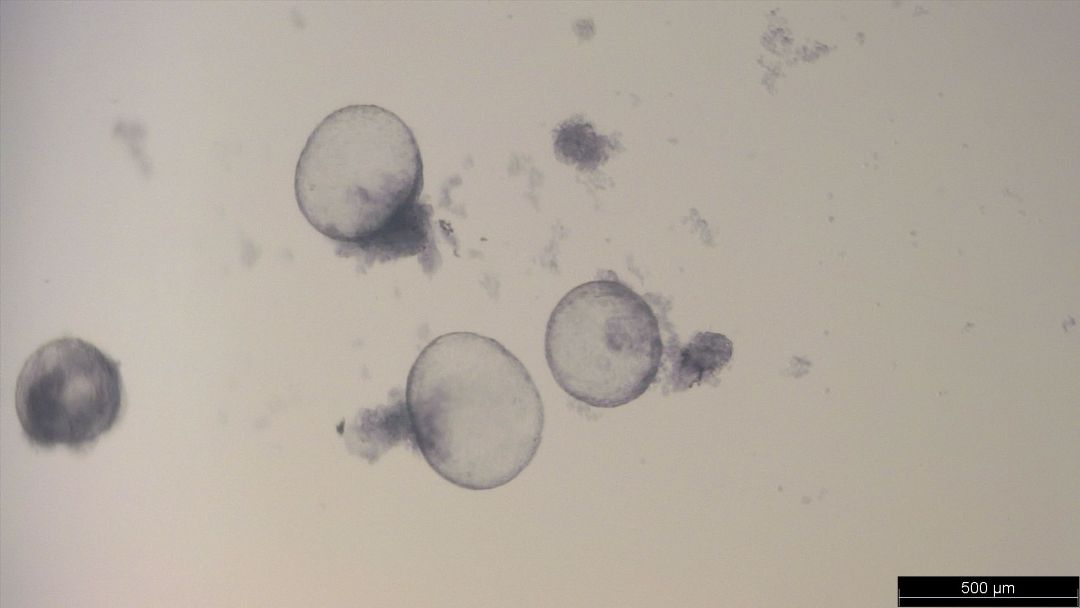
Miniature messengers: delivering pregnancy news and healing substances
A group of tiny cargo-filled messengers may be the answer to how horse embryos communicate with the mother in early pregnancy and could potentially be used to heal other parts of the body.
By Lynka ItogawaExtracellular vesicles (EVs) are produced by all the body’s cells, and like miniature Pony Express riders, they carry vital information that allows those cells to communicate with each other.
Dr. Claire Card (DVM, PhD) is a professor and equine reproduction specialist at the Western College of Veterinary Medicine (WCVM). She and her graduate student, Dr. Josefina Ghersa (DVM), are looking at EVs specifically produced by the uterus of a pregnant mare and the embryo so they can better understand the issue of early pregnancy loss in horses and how it can be prevented.

“We think that this type of research will eventually lead to an understanding of therapies that will improve the uterine environment, decrease pregnancy losses, and save people a lot of money, time and frustration,” says Card.
In previous studies, researchers have reported early pregnancy loss rates of between 7.9 and 17 per cent in mares. In older animals, there’s a lower chance at becoming pregnant plus a higher pregnancy loss rate (up to 36 per cent in older mares) — two important factors since many valuable performance horses aren’t bred until later in life.
“As a reproductive specialist, pregnancy loss is one of the most devastating and disappointing events that happens in our profession,” says Card.
She adds that the key to preventing early pregnancy loss is by first understanding all the processes that happen during pregnancy. Unlike all other domesticated animals, the early communication between the equine embryo and the mother — referred to as maternal recognition of pregnancy or MRP — remains a scientific mystery. Card and her research team are working to solve this biological riddle with the support of a five-year research grant from the Natural Sciences and Engineering Research Council of Canada (NSERC).
One challenge posed by this research is the number of horses needed to study EVs produced by embryos. As well, researchers can only study these embryos in the spring and summer because horses are seasonal breeders.
To help reduce the number of horses needed and the associated costs, Card and her team are investigating the use of trophoblastic vesicles (TRVs). When an embryo is divided into fragments in a petri dish, each fragment grows into new embryo-like structures or TRVs. These structures release hormones and the tiny extracellular vesicles — just like those found in an embryo.
Finding a way to freeze and thaw TRVs will allow the WCVM research team to study them year-round without requiring large numbers of mares in a study. With TRVs, researchers “can take one embryo and turn it into a plate full of studies,” says Card.

The TRVs grow in a liquid medium that Ghersa changes every 12 hours for four days to help the TRVs develop and to collect the used media. This time commitment means long days for the graduate student, who spends many hours in the lab before and after her work with clients’ horses during the day.
“Our busy season is during the summer (clinically), and our research also has to occur in the summer … so we are combining two jobs into one in a 24-hour day,” says Card.
Once grown, the researchers use TRVs for imaging or freeze them in various conditions to see if they are still alive after thawing. As well, the WCVM team analyzes the media to identify and measure how much hormone and EVs are released by the TRVs.
The WCVM research team is also interested in the regenerative medicine properties of EVs. In addition to delivering messages, these miniscule structures may have the potential to deliver substances that promote healing in parts of the horse’s body — including the uterus.
Many older mares have an unhealthy uterine environment that makes it challenging for them to maintain a pregnancy. The ability to deliver a targeted shipment of healing substances may be one way of treating the equine uterus.
Right now, regenerative medicine only uses substances derived from a horse’s own body. Substances obtained from one horse can’t be given to another because the receiving horse’s body may reject them. Purified EVs may overcome that problem, which would allow scientists to develop commercially available therapeutic agents that could be safely used to deliver healing substances to all horses.
While much work still needs to be done, EVs are showing great potential as powerful tools for equine health — something that Card and her research team are working hard to realize.
Lynka Itogawa of Stoughton, Sask., is a third-year WCVM veterinary student whose 2025 summer research position was supported by the Townsend Equine Health Research Fund. Her story is part of an article series written by WCVM summer research students.Together, we will undertake the research the world needs. We invite you to join by supporting critical research at USask.
